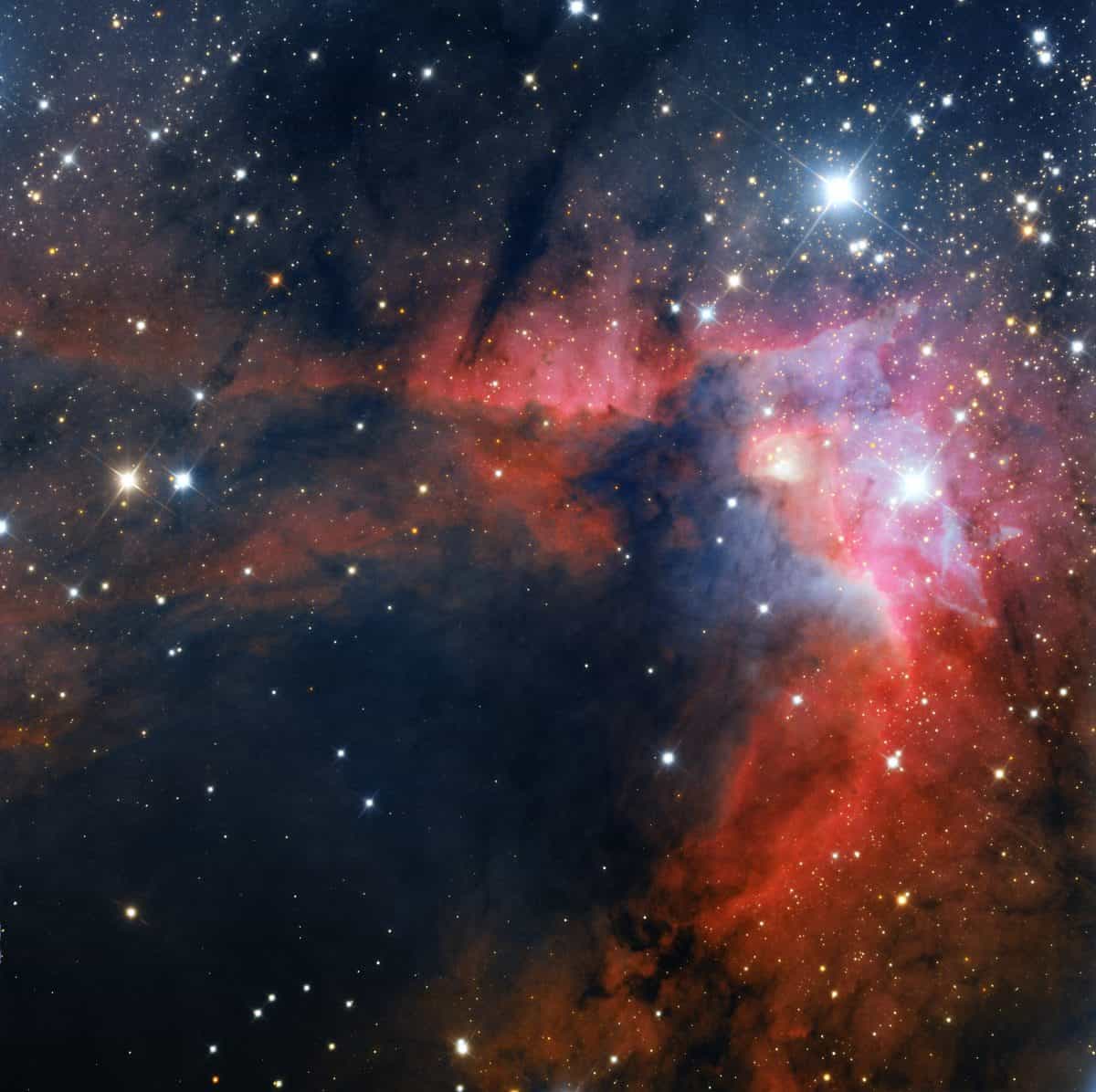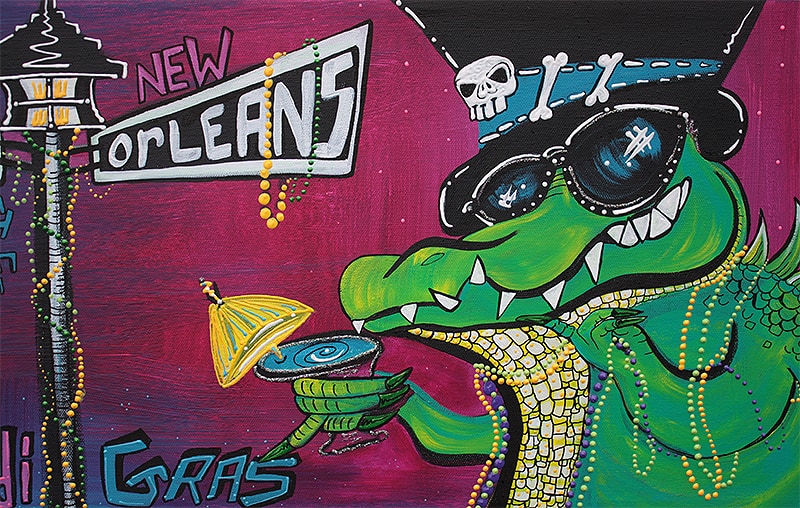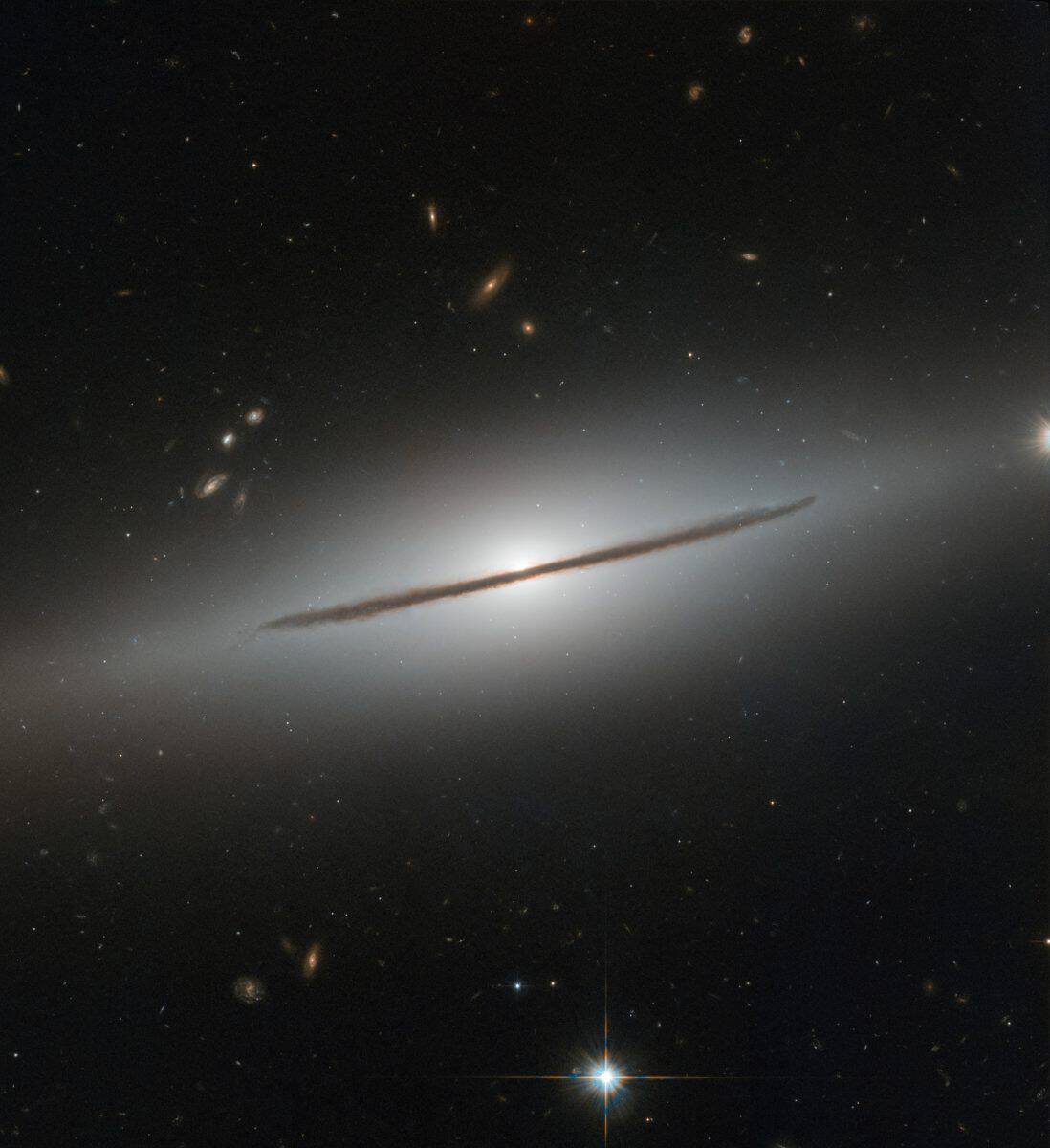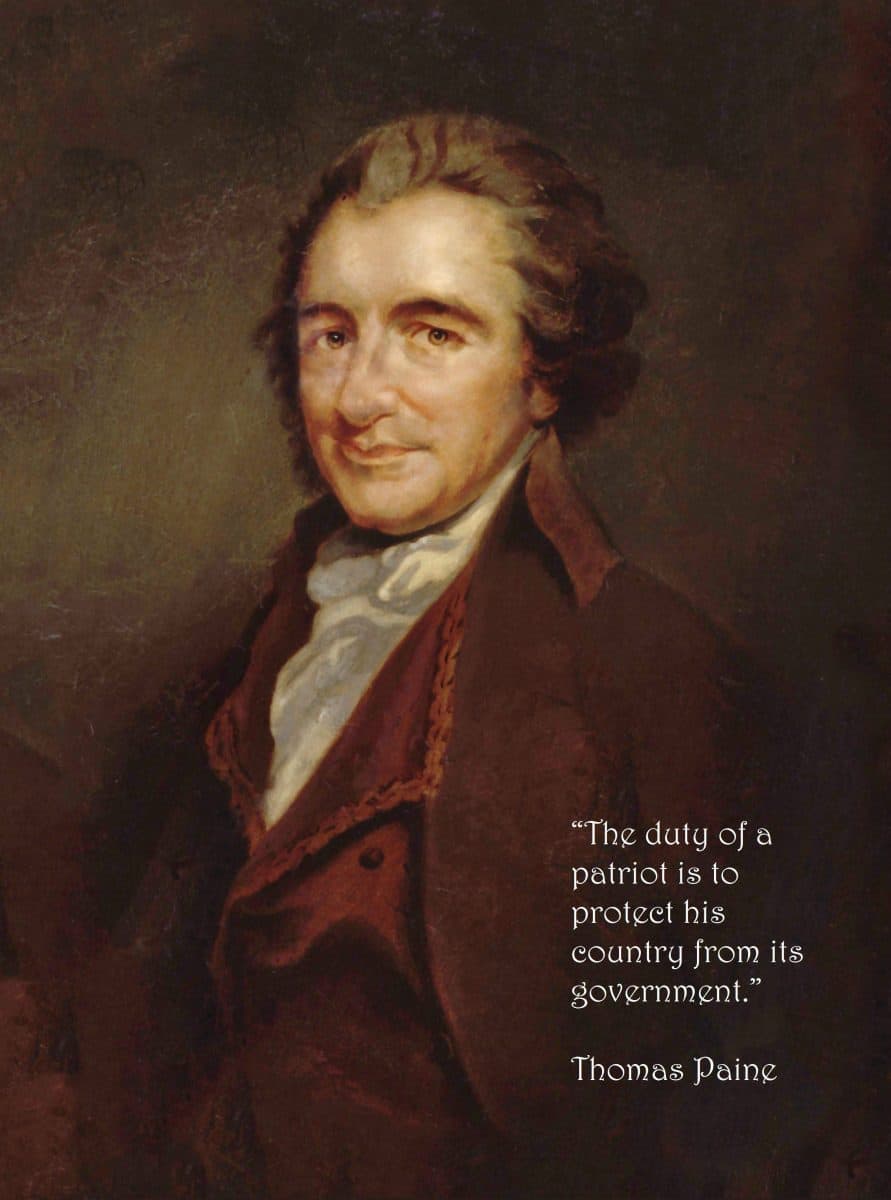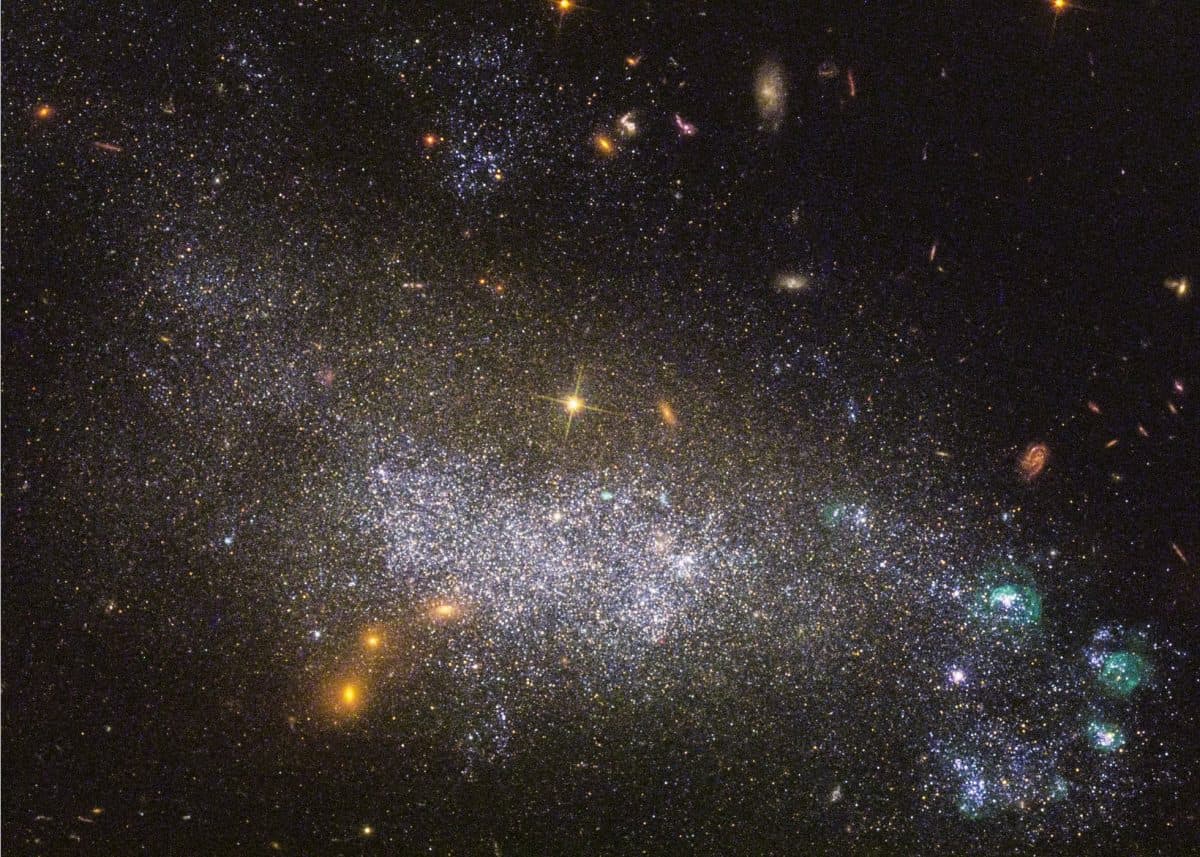Blog
https://www.youtube.com/watch?v=9OJnW2LbUw4
more...Sh2-155 (also designated Sharpless 155 or S155) is a diffuse nebula in the constellation Cepheus, within a larger nebula complex containing emission, reflection, and dark nebulosity. It is widely known as the Cave Nebula, though that name was applied earlier to Ced 201, a different nebula in Cepheus. Sh2-155 is an ionized H II region with ongoing star formation activity, at an estimated distance of 725 parsecs (2400 light-years) from Earth.
Sh2-155 was first noted as a galactic emission nebula in 1959 in the extended second edition of the Sharpless catalogue, being a part of the much larger Cep OB3 Association. Although Sh2-155 is relatively faint for amateur observation, some of its structure may be seen visually through a moderately sized telescope under dark skies.
Sh2-155 lies at the edge of the Cepheus B cloud (part of the Cepheus molecular cloud), and is ionized by young stars from the Cep OB3 association. It has been suggested that radiation from the hot O-type star HD 217086 is compressing the region, triggering the formation of a new generation of stars.
more...Michael Shrieve (born July 6, 1949, in San Francisco) is an American drummer, percussionist, and composer. He is best known as the drummer of the rock band Santana. He played on its albums from 1969 to 1974.[1] When he was 20, Shrieve was one of the youngest musicians to perform at Woodstock in 1969. His drum solo during “Soul Sacrifice” in the Woodstock film has been described as “electrifying”.
https://www.youtube.com/watch?v=aFhcVmD9lIs
more...Luigi Paulino Alfredo Francesco Antonio Balassoni (July 6, 1924 – February 14, 2009), known by the stage name Louie Bellson (his own preferred spelling, although he is often seen in sources as Louis Bellson), was an American jazz drummer. He was a composer, arranger, bandleader, and jazz educator, and is credited with pioneering the use of two bass drums.
Bellson was an internationally acclaimed artist who performed in most of the major capitals around the world. Bellson and his wife, actress and singer Pearl Bailey (married from 1952 until Bailey’s death in 1990), had the second highest number of appearances at the White House (only Bob Hopehad more).
Bellson was a vice president at Remo, a drum company. He was inducted into the Modern Drummer Hall of Fame in 1985.
Bellson was born in Rock Falls, Illinois in 1924 and started playing drums at three years of age. At 15, he pioneered using two bass drums at the same time. At age 17, he triumphed over 40,000 drummers to win the Slingerland National Gene Krupa contest.
After graduating from high school, he worked with big bands throughout the 1940s, with Benny Goodman, Tommy Dorsey, Harry James, and Duke Ellington. In 1952, he married jazz singer Pearl Bailey. During the 1950s, he played with the Dorsey Brothers, Jazz at the Philharmonic, acted as Bailey’s music director, and recorded as a leader for Norgran Records and Verve Records.
more...World Music on Flamenco Fridays with David Cerreduela performing Rondena.
A Rondeña is a palo or musical form of flamenco originating in the town of Ronda in the province of Málaga in Spain.
In common with other palos originating in Málaga, the rondeña antedated flamenco proper and became incorporated into it during the 19th century.
The rondeña has its origin in the fandango malagueño and it is said that it is “the oldest fandango actually known”.
According to the experts, the name does not derive from “nocturnal rounds”, as some have suggested, but is based solely on the name of the town Ronda.
The rondeña spread enormously throughout Andalusia in the 19th century, to such an extent that numerous foreign observers, touring the region at the time, referred to it later in their writings.
Flamenco guitarist from the neighborhood of “Caño Roto”, one of the cradles of flamenco in Madrid.
Currently he is one of the most sought-after guitarists in the flamenco field. He has worked with most of the great flamenco stars such as Antonio Canales, Sara Baras, Enrique Morente and others, who have their music in their shows, since he is one of the flamenco guitarists with the most personality for his musical language and sound.
https://www.youtube.com/watch?v=Sx9ySvREn4M
more...https://www.youtube.com/watch?v=LdFY9OMHvhg
more...BEAU KOO JACKS Mardi Gras NOLA music
JULY 5TH 2018 1130pm-1230am
Nomad Pub on the West Bank Minneapolis
Elton James Birthday
with Van Nixon, Jamie Carter, Todd Matheson, Paul Strickland, Larry McCabe with special guests David Hamilton and Eric Hohn. And mick laBriola bringing on the Gris Gris.
more...NGC 1032 is located about a hundred million light years away in the constellation Cetus (The Sea Monster). Although beautiful, this image perhaps does not do justice to the galaxy’s true aesthetic appeal: NGC 1032 is actually a spectacular spiral galaxy, but from Earth, the galaxy’s vast disc of gas, dust and stars is seen nearly edge-on.
A handful of other galaxies can be seen lurking in the background, scattered around the narrow stripe of NGC 1032. Many are oriented face-on or at tilted angles, showing off their glamorous spiral arms and bright cores. Such orientations provide a wealth of detail about the arms and their nuclei, but fully understanding a galaxy’s three-dimensional structure also requires an edge-on view. This gives astronomers an overall idea of how stars are distributed throughout the galaxy and allows them to measure the “height” of the disc and the bright star-studded core.
more...Jaime Royal “Robbie” Robertson, OC (born July 5, 1943), is a Canadian musician, songwriter, film composer, producer, actor, and author.
Robertson is best known for his work as lead guitarist and primary songwriter for The Band, and for his career as a solo recording artist. His work with The Band was instrumental in creating the Americana music genre. Robertson has been inducted into the Rock and Roll Hall of Fame and the Canadian Music Hall of Fame as a member of The Band, and has been inducted to Canada’s Walk of Fame, both with The Band and on his own. He is ranked 59th in Rolling Stone magazine’s list of the 100 greatest guitarists.
As a songwriter, Robertson is credited for writing “The Weight“, “The Night They Drove Old Dixie Down“, “Up on Cripple Creek“, “Broken Arrow“, “Somewhere Down the Crazy River“, and many others. He has been inducted into the Canadian Songwriters Hall of Fame, and received a Lifetime Achievement Award from the National Academy of Songwriters.
more...Overton Amos Lemons (July 5, 1913 – October 7, 1966), known as Smiley Lewis, was an American New Orleans rhythm and blues singer and guitarist. The music journalist Tony Russell wrote that “Lewis was the unluckiest man in New Orleans. He hit on a formula for slow-rocking, small-band numbers like ‘The Bells Are Ringing’ and ‘I Hear You Knocking‘ only to have Fats Domino come up behind him with similar music more ingratiatingly delivery. Lewis was practically drowned in Domino’s backwash.”
Lemons was born in DeQuincy, Louisiana, a rural hamlet near Lake Charles, to Jeffrey and Lillie Mae Lemons. He was the second of three sons. His mother died while he was a child, and later he named a song and several automobiles after her. In his mid-teens, he hopped a slow-moving freight train with some friends, who jumped off when the train began to speed up. Lewis alone remained on the train, getting off when it reached its stop in New Orleans. He found boarding with a Caucasian family in the Irish Channel neighborhood and eventually adopted their surname, Lewis.
https://www.youtube.com/watch?v=TuxjKSM15p4
more...Aladár Csiszár is one of the last great gypsy fiddlers from an area of Transylvania called Székelyföld [Land of the Secklers]. He is the most important informance from this region where folk music was preserved throughout the centuries. He was born into a Gypsy dynasty of musicians and has played all his life for communities surrounding his birthplace. His playing may be characterized by wild improvisations, commendable musicianship and charismatic style.
more...The Fireworks Galaxy
NGC 6946 is a face-on intermediate spiral galaxy with a small bright nucleus, whose location in the sky straddles the boundary between the northern constellations of Cepheus and Cygnus. Its distance from Earth is about 22.5 million light-years or 6.8 megaparsecs, similar to the distance of M101 (NGC 5457) in the constellation Ursa Major. Both were once considered to be part of the Local Group. but are now known to be among the dozen bright spiral galaxies near the Milky Way but beyond the confines of the Local Group. NGC 6946 lies within the Virgo Supercluster.
Discovered by William Herschel on 9 September 1798, this well-studied galaxy has a diameter of approximately 40,000 light-years, about one-third of the Milky Way’s size, and it contains roughly half the number of stars as the Milky Way. The galaxy is heavily obscured by interstellar matter as it lies quite close to the galactic plane of the Milky Way. Due to its prodigious star formation it has been classified as an active starburst galaxy.
Various unusual celestial objects have been observed within NGC 6964. This includes the so-called ‘Red Ellipse’ along one of the northern arms that looks like a super-bubble or very large supernova remnant, and which may have been formed by an open cluster containing massive stars. There are also two regions of unusual dark lanes of nebulosity, while within the spiral arms several regions appear devoid of stars and gaseous hydrogen, some spanning up to two kiloparsecs across. A third peculiar object, discovered in 1967, is now known as “Hodge’s Complex”. This was once thought to be a young supergiant cluster, but in 2017 it was conjectured to be an interacting dwarf galaxy superimposed on NGC 6964.
Ten supernovae have been observed in NGC 6946 in the last century: SN 1917A, SN 1939C, SN 1948B, SN 1968D, SN 1969P, SN 1980K, SN 2002hh, SN 2004et, SN 2008S, and SN 2017eaw. For this reason NGC 6946 in 2005 was dubbed the Fireworks Galaxy, a name becoming increasingly popular. NGC 6946 has an unusually high rate of supernovae production compared to our Milky Way galaxy, whose rate averages just one supernova event per century. This is the more remarkable as our Galaxy comprises twice as many stars.
more...William Harrison Withers Jr. (born July 4, 1938) is an American singer-songwriter and musician who performed and recorded from 1970 until 1985. He recorded several major hits, including “Lean on Me“, “Ain’t No Sunshine“, “Use Me“, “Just the Two of Us“, “Lovely Day“, and “Grandma’s Hands“. Withers won three Grammy Awards and was nominated for four more. His life was the subject of the 2009 documentary film Still Bill. He was inducted into the Rock and Roll Hall of Fame in 2015.
Withers, the youngest of six children, was born in the small coal-mining town of Slab Fork, West Virginia.
more...Fred Wesley (born July 4, 1943) is an American jazz and funk trombonist, best known for his work with James Brown in the 1960s and 1970s, as well as Parliament-Funkadelic in the second half of the 1970s. In 2015, Wesley was inducted into the Alabama Jazz Hall of Fame.
Wesley was born the son of a high school teacher and big band leader in Columbus, Georgia, and raised in Mobile, Alabama. As a child he took piano and later trumpet lessons. He played baritone horn and trombone in school, and at around age 12 his father brought a trombone home, whereupon he switched (eventually permanently) to trombone.
more...This tune commemorates the Sir Henry Clinton’s, Commander of the British forces, storming of Stony Point in 1779. General George Washington managed to outsmart Clinton, and staged to a maneuver to retake Stony Point with the help of General Anthony Wayne, which was eventually successful.
By Tommy Jackson
more...Usually astronomers have to look at galaxies billions of light-years away to study how galaxies form, because light from those galaxies takes billions of years to reach us. But UGC 5340, a bizarre dwarf galaxy only 40 million light-years away, looks surprisingly young for a galaxy so close by. Astronomers aren’t sure if UGC 5340 is as young as it appears, or if its looks might be deceiving. The Hubble Space Telescope captured this view of UGC 5340 as part of the Legacy ExtraGalactic UV Survey, which studies nearby star-forming galaxies in ultraviolet light.
more...Lonnie Smith (born July 3, 1942), styled Dr. Lonnie Smith, is an American jazz Hammond B3 organist.
He was born in Lackawanna, New York, into a family with a vocal group and radio program. Smith says that his mother was a major influence on him musically, as she introduced him to gospel, classical, and jazz music. He was part of several vocal ensembles in the 1950s, including the Teen Kings which included Grover Washington Jr., on sax and his brother Daryl on drums.
After recording several albums with Benson, Smith became a solo recording artist and has since recorded over 30 albums under his own name. Numerous prominent jazz artists have joined Smith on his albums and in his live performances, including Lee Morgan, David “Fathead” Newman, King Curtis, Terry Bradds, Blue Mitchell, Joey DeFrancesco and Joe Lovano.
In 1967, Smith met Lou Donaldson, who put him in contact with Blue Note Records. Donaldson asked the quartet to record an album for Blue Note, Alligator Bogaloo. Blue Note signed Smith for the next four albums, all in the soul jazz style, including Think (with Lee Morgan, David Newman, Melvin Sparks and Marion Booker) and Turning Point (with Lee Morgan, Bennie Maupin, Melvin Sparks and Idris Muhammad).
more...More Posts
- World Music with Transglobal Underground
- Daily Roots with Leroy Smart
- Republican Accountability Project
- Racism 1957 to 2021
- The Cozmos with Arp 86
- Esperanza Spalding
- Winton Marsalis
- Chuck Berry
- Ambrose Thibodeaux
- World Music with Ogún Afrobeat
- Daily Roots with Don Carlos
- The Cozmos with M33
- Ziggy Marley
- Rico Rodriguez
- Barney Kessel
- Cozy Cole
- World Music with Kadialy Kouyaté
- Daily Roots with John Holt
- The Cozmos with M45
- Roy Hargrove
